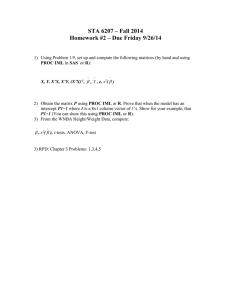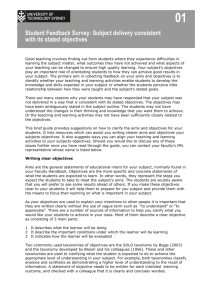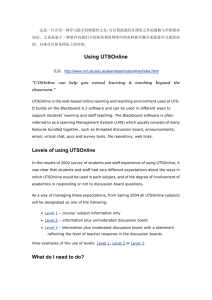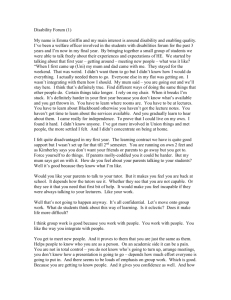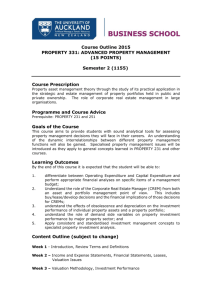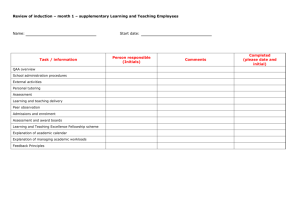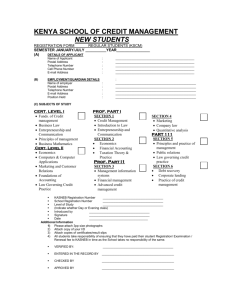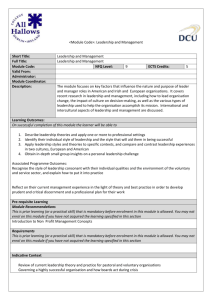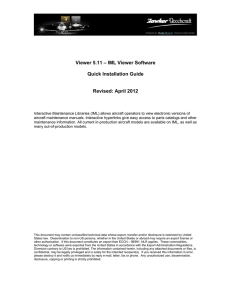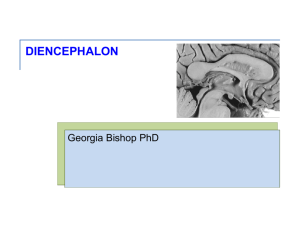Feedback on being well prepared, organised
advertisement
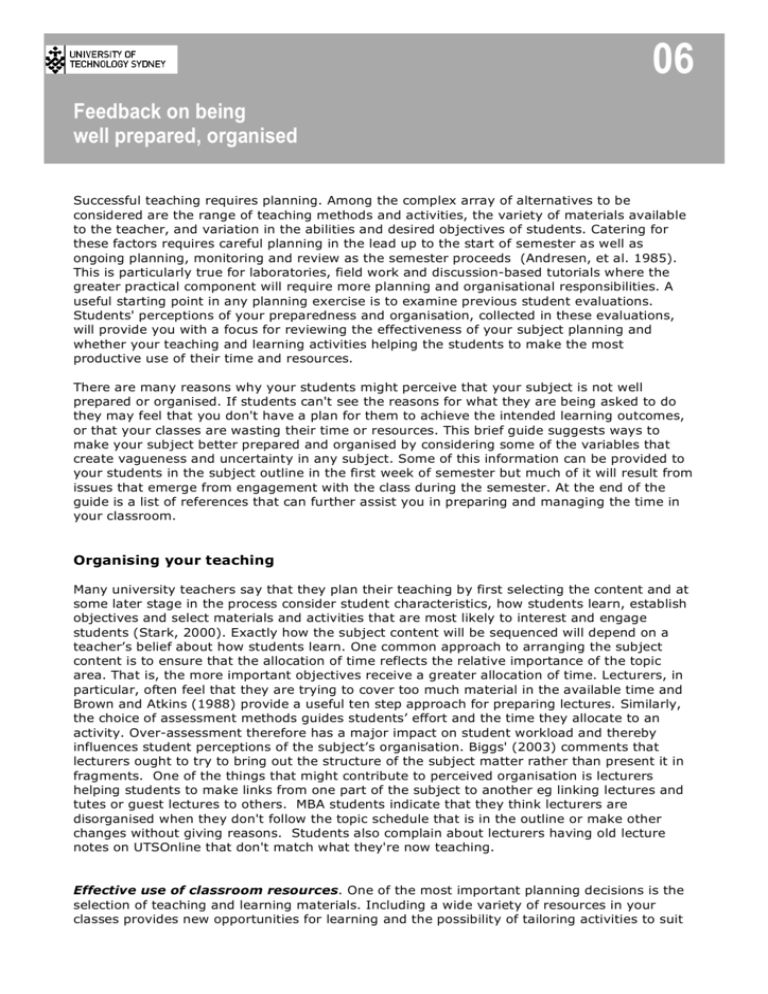
06 Feedback on being well prepared, organised Successful teaching requires planning. Among the complex array of alternatives to be considered are the range of teaching methods and activities, the variety of materials available to the teacher, and variation in the abilities and desired objectives of students. Catering for these factors requires careful planning in the lead up to the start of semester as well as ongoing planning, monitoring and review as the semester proceeds (Andresen, et al. 1985). This is particularly true for laboratories, field work and discussion-based tutorials where the greater practical component will require more planning and organisational responsibilities. A useful starting point in any planning exercise is to examine previous student evaluations. Students' perceptions of your preparedness and organisation, collected in these evaluations, will provide you with a focus for reviewing the effectiveness of your subject planning and whether your teaching and learning activities helping the students to make the most productive use of their time and resources. There are many reasons why your students might perceive that your subject is not well prepared or organised. If students can't see the reasons for what they are being asked to do they may feel that you don't have a plan for them to achieve the intended learning outcomes, or that your classes are wasting their time or resources. This brief guide suggests ways to make your subject better prepared and organised by considering some of the variables that create vagueness and uncertainty in any subject. Some of this information can be provided to your students in the subject outline in the first week of semester but much of it will result from issues that emerge from engagement with the class during the semester. At the end of the guide is a list of references that can further assist you in preparing and managing the time in your classroom. Organising your teaching Many university teachers say that they plan their teaching by first selecting the content and at some later stage in the process consider student characteristics, how students learn, establish objectives and select materials and activities that are most likely to interest and engage students (Stark, 2000). Exactly how the subject content will be sequenced will depend on a teacher’s belief about how students learn. One common approach to arranging the subject content is to ensure that the allocation of time reflects the relative importance of the topic area. That is, the more important objectives receive a greater allocation of time. Lecturers, in particular, often feel that they are trying to cover too much material in the available time and Brown and Atkins (1988) provide a useful ten step approach for preparing lectures. Similarly, the choice of assessment methods guides students’ effort and the time they allocate to an activity. Over-assessment therefore has a major impact on student workload and thereby influences student perceptions of the subject’s organisation. Biggs' (2003) comments that lecturers ought to try to bring out the structure of the subject matter rather than present it in fragments. One of the things that might contribute to perceived organisation is lecturers helping students to make links from one part of the subject to another eg linking lectures and tutes or guest lectures to others. MBA students indicate that they think lecturers are disorganised when they don't follow the topic schedule that is in the outline or make other changes without giving reasons. Students also complain about lecturers having old lecture notes on UTSOnline that don't match what they're now teaching. Effective use of classroom resources. One of the most important planning decisions is the selection of teaching and learning materials. Including a wide variety of resources in your classes provides new opportunities for learning and the possibility of tailoring activities to suit the particular interests and needs of individuals. Students want access to a range of resources to provide a rich and varied learning environment as long as materials are up-to-date and extend information that is available from the teacher. Students also like to know how they're expected to use various resources if there are lots available and the use of a textbook can ease preparation requirements by helping to structure and sequence a class. There are, however, a number of pitfalls to preparing classes based on textbooks, such as deferring too much of the decision making to the textbook’s authors. Students are especially annoyed by requirements to purchase expensive textbooks that aren’t used extensively in class. Managing class time The organisation of time within the classroom can enhance or detract from your teaching. Boice (1996) found that students expect lectures to maintain control of the classroom, ensuring that the activities in the classroom are the ones likely to lead to a deep engagement with the subject content. Minimise wasted time by starting quickly and on time. Be punctual, even if some of your students are late. Chat to the nearest students while the rest of the class is settling in. Do not become side-tracked by irrelevant topics during the class. Distributing materials prepared ahead of time can take a significant period of class time. Establishing a procedure for distributing and picking up students work, for the transitions between activities, handing out and collecting materials and leaving the room will all assist in classroom organisation. Ensure that the physical environment is arranged in a manner that suits the particular activities that will take place in the classroom. For example, small group activities are benefited by table arrangements that permit interaction among group members without disturbing other groups. Prioritise your class time through scheduling and allocating time to priority areas. For example scheduling time for question and answer sessions increases the likelihood that student’s will participate in those activities. Classroom equipment. A great deal of time can be wasted with setting up and trouble shooting faulty classroom equipment. You should ensure that you are familiar with how to use all the equipment in the classroom, particularly the Overhead Projector and data projector. Take the time to practice with this equipment before it is needed. Live demonstrations are particularly prone to malfunction so have a back-up plan in case of equipment failure. Get to know the names of the ITS staff can help you if the equipment isn't working. Further Reading Andresen, L. et al. (1985) Planning and monitoring courses: University teachers reflect on their teaching. Instructional Science 13, 305-328. Boice, R. (1996). Classroom incivilities. Research in Higher Education, 37 (4) 453-486 Brown, G. & Atkins, M. (1988). Effective Teaching in Higher education. London: Routlege. Clark, C. M., & Yinger, R. J. (1987). Teacher planning. In J. Calderhead (Ed.), Exploring teachers’ thinking (pp. 84-103). Great Britain: Mackays of Chatham. Stark, J. (2000). Planning introductory college courses: Content, context and form. instructional Science 28, pp. 413-438. It would be appropriate to take your initial response to your student feedback results to your academic supervisor. The IML can also assist in interpreting your student feedback results. If you like to discuss any aspect of your teaching, please contact the IML liaison person within your faculty. Details are on the IML web site: http://www.iml.uts.edu.au/about/contact.html The IML welcomes feedback, suggestions and contributions to this guide on improving student feedback. Please contact Peter.Kandlbinder@uts.edu.au with suggestions for future items of interest.
